SEO and PPC are separate marketing channels that each have unique roles and purposes.
But that doesn’t mean you have to choose between SEO and PPC.
You can benefit from both SEO and PPC.
Integrating SEO & PPC Data Has Never Been More Important
SEO and PPC both have a goal in common: attracting people to your website.
A holistic approach to search will help you to navigate an increasingly complex landscape.
By combining forces, you have an opportunity to:
- Share learnings.
- Improve budget efficiency.
- Help drive mutual growth for the brands you’re managing.
The truth is this does not happen enough in practice.
Take for example this debate a few months back about the need for brand bidding to maintain visibility in search due to competitor bidding.
Brand ads can actually be more effective than organic listings, allowing brands to fully control creative messaging and landing pages for every related search term.
Building a deeper understanding of how both SEO and PPC can complement each other to deliver mutually beneficial performance is critical to success.
Strategic Data Sharing Across Organic & Paid Search
The ability to share learnings across organic and paid search begins by building integrated dashboards displaying key search (SEO and PPC) performance data, primarily focusing on keyword-level trends.
The examples I’ll cover in this post use dashboards built out using Google Data Studio, but the same outcomes can be achieved using any data management platform.
Essentially, the aim is to export and integrate organic performance metrics such as:
- Organic impressions.
- Average ranking position from Google Search Console (or related keyword tracking software).
- Organic CTR.
And then combining this data with PPC metrics such as:
- CPC.
- CTR.
- Conversion data.
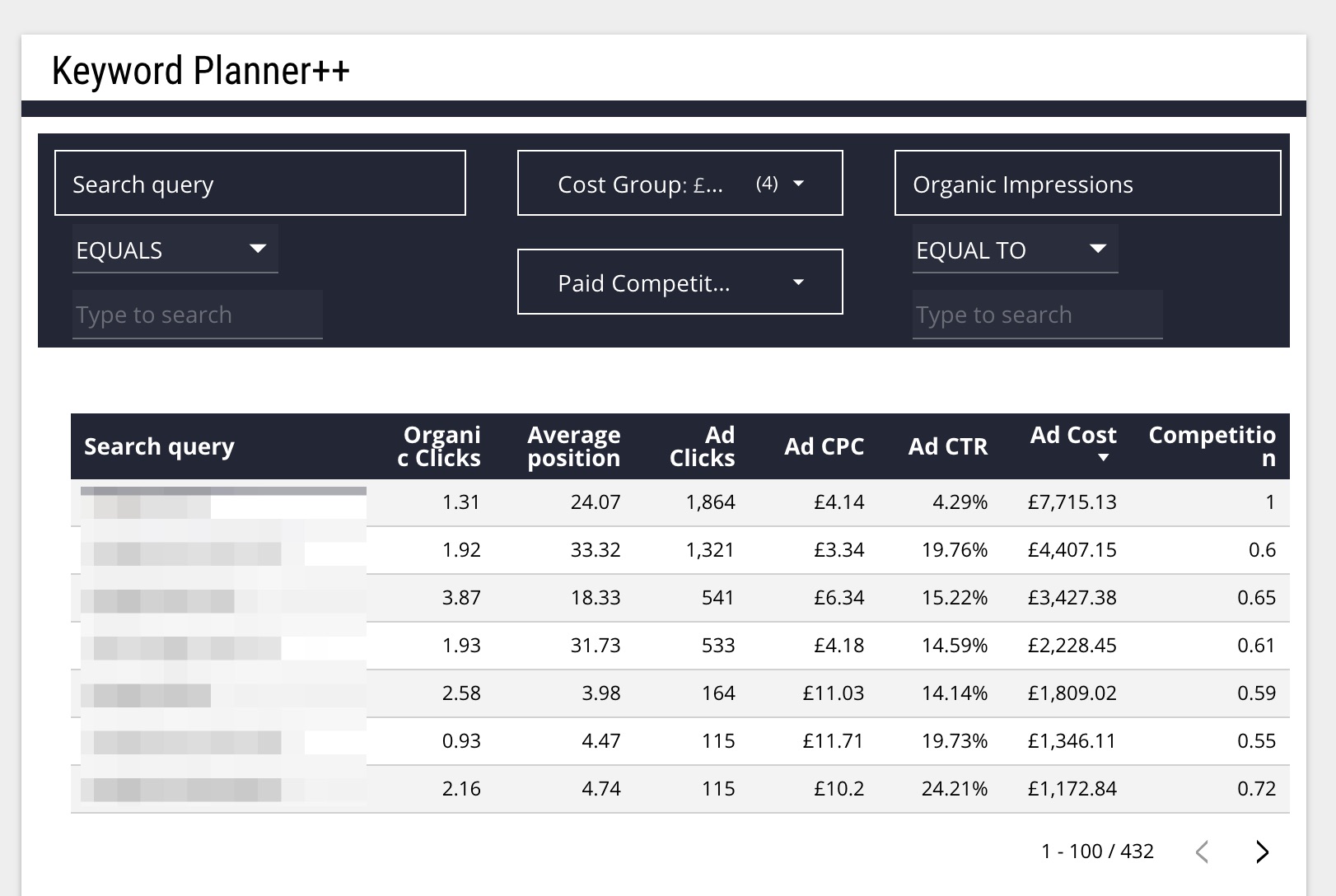 Example output of combined SEO and PPC keyword-level data.
Example output of combined SEO and PPC keyword-level data.Once you’ve finished data wrangling, you can start to build out some useful charts to identify areas to improve performance for both PPC and SEO activity.
Using scatter graphs is a highly visual method of spotting outliers, while also being able to drill down to a keyword level for further investigation.
As an example, identifying keywords with high paid CPC’s and really low organic visibility (measured by average position/ranking).
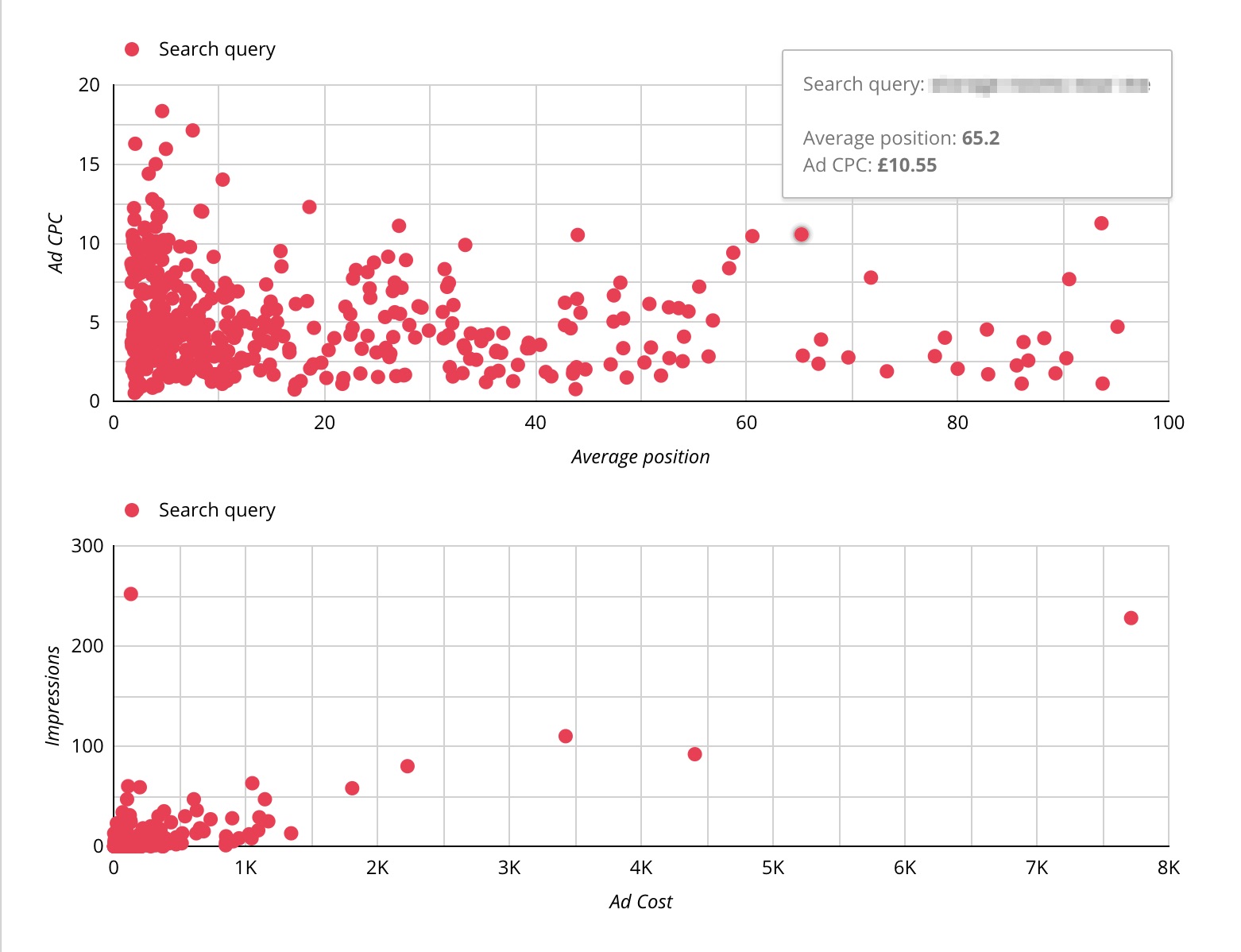 Examples of graphs used to identify outliers for further investigation
Examples of graphs used to identify outliers for further investigationHowever, data without insight is just a bunch of numbers.
Therefore, it’s imperative to combine this with human insight and analysis to provide input and advice before taking action.
How Can I Use This Data in Practice?
Scenario 1: I Need to Cut Budgets, Where Should I Start?
Many of us have had to make difficult decisions over the past few months.
And with a global recession now inevitable, we’ll likely be asked to cut marketing budgets further.
In March 2020, Statista surveyed B2B marketers in the U.S. and found that 61% expect they will need to cut budgets.
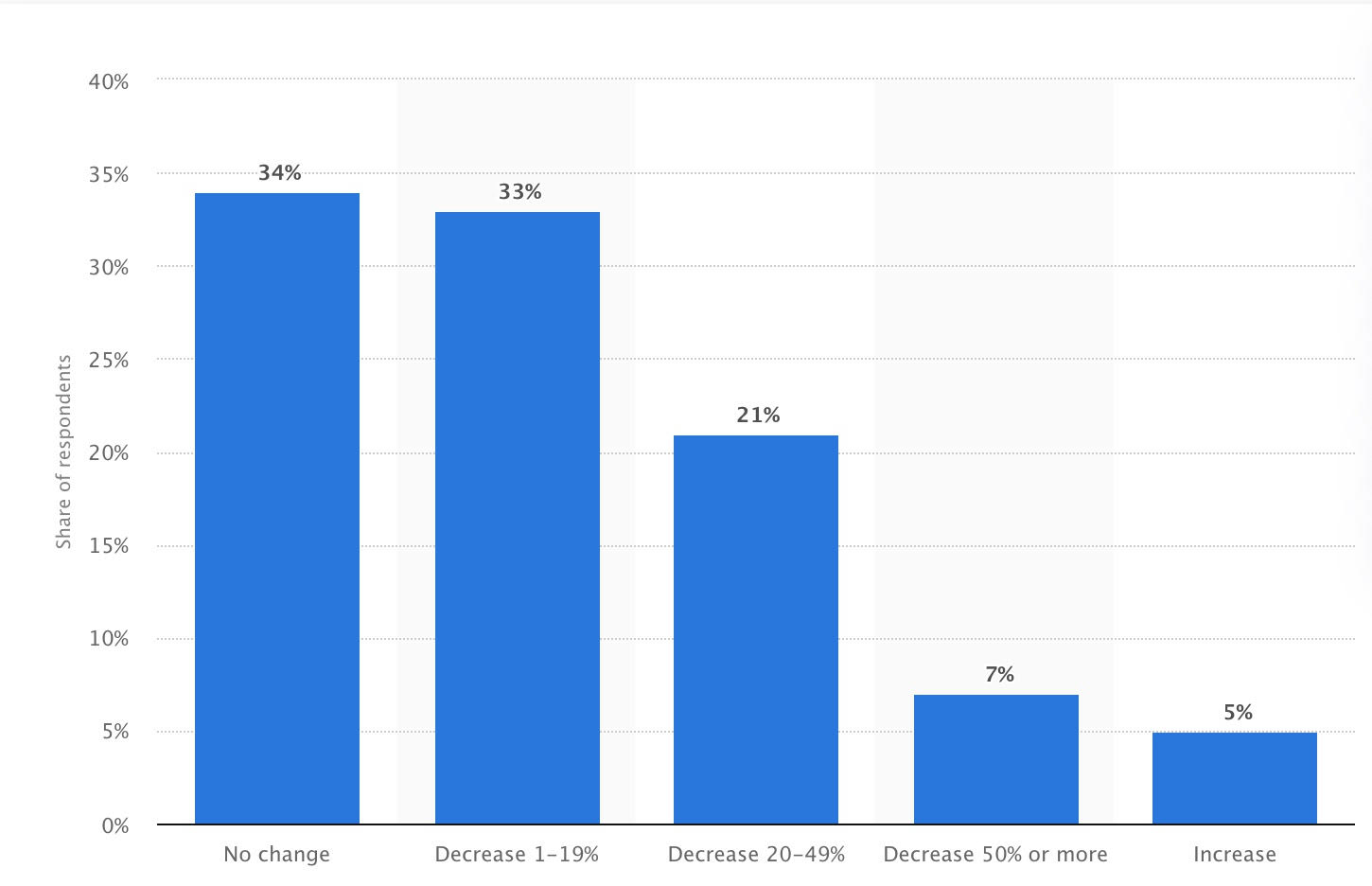
The key to ensuring your brand doesn’t suffer long-lasting damage is to:
- Cut budgets where you can sustain a downturn.
- Prop up performance with strong organic visibility.
One way to do this while minimizing damage is to identify which PPC keywords are using budget where you’re dominating organic results with little paid competition.
For example, we can look to identify any keywords that rank #1 (on average) and start to total up any associated paid spend on those keywords.
This will help you identify immediate areas where you can start to pause within PPC accounts, while monitoring the overall impact on traffic and sales.
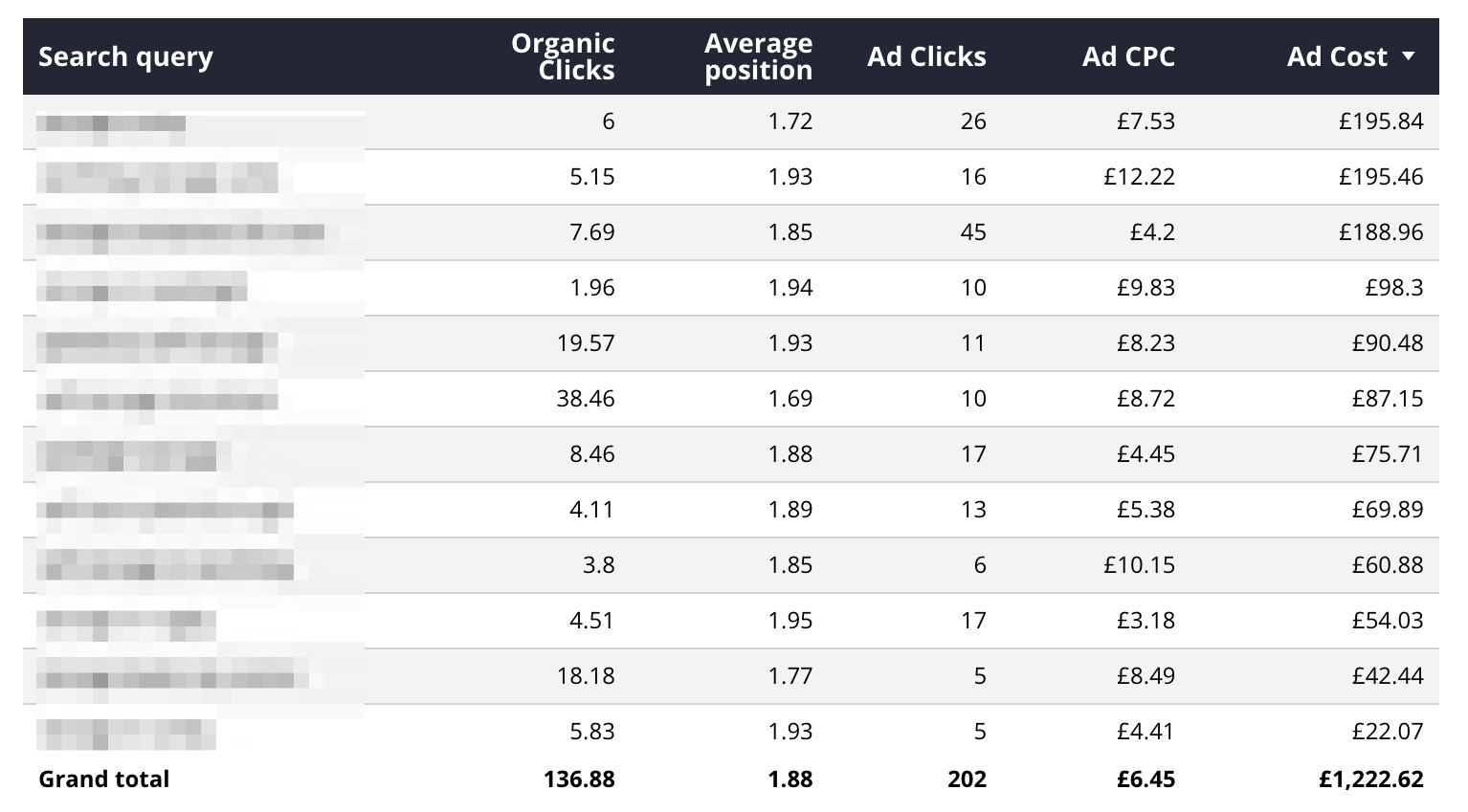 Keywords with organic average position ≈ 1 and associated PPC spend
Keywords with organic average position ≈ 1 and associated PPC spendScenario 2: Where Can I Save More Budget in the Medium Term?
Need to make even more savings?
Then you need to start identifying opportunities where you:
- Are not performing quite as well organically.
- Are currently spending more substantial cash on PPC.
For example, here we may look to identify:
- Keywords ranking outside the top 3 organic results.
- Average CPC higher than account average.
The amounts you’ll typically be able to save with this kind of filter will be much more substantial.
But the potential impact on overall traffic acquisition and sales will certainly impact business performance more than scenario A if implemented immediately.
This is where the SEO team has their work cut out!
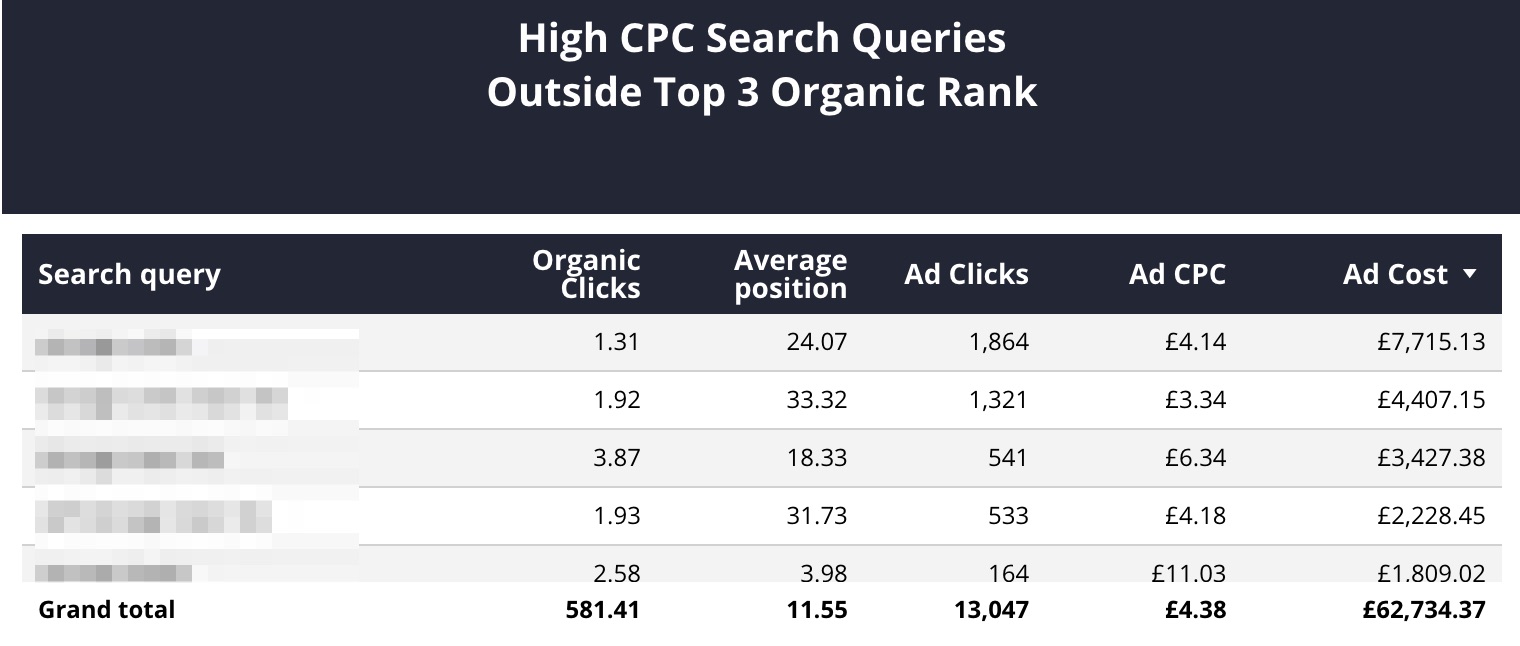 Organic rank < 3 and above average PPC CPC
Organic rank < 3 and above average PPC CPCIf saving budget is a necessity, then we need to write some content that enables us to rank for these queries through organic search instead of trying to recapture some of this traffic.
For the SEO practitioners, this means identifying clusters of related keywords and writing useful content related to these phrased designed to target some of the traffic previously being driven through PPC.
Granted, this is an area you wouldn’t want to pause PPC immediately if given the option, but what you can do is build a business case around this data.
And over the next month, for instance, write content aimed at targeting related topics through organic search.
Maybe then you can start pausing some of these PPC keywords once you gain more organic visibility.
Scenario 3: Which Pages Can I Tweak to Make the Biggest Impact on Organic Sales?
Strong rankings are important for SEO but what’s even more important is getting clicks through from the search results.
You can measure the proportion of clicks you’re receiving relative to the impressions you get for different keywords by measuring organic CTR.
The focus of this exercise is identifying areas where we can boost organic CTR.
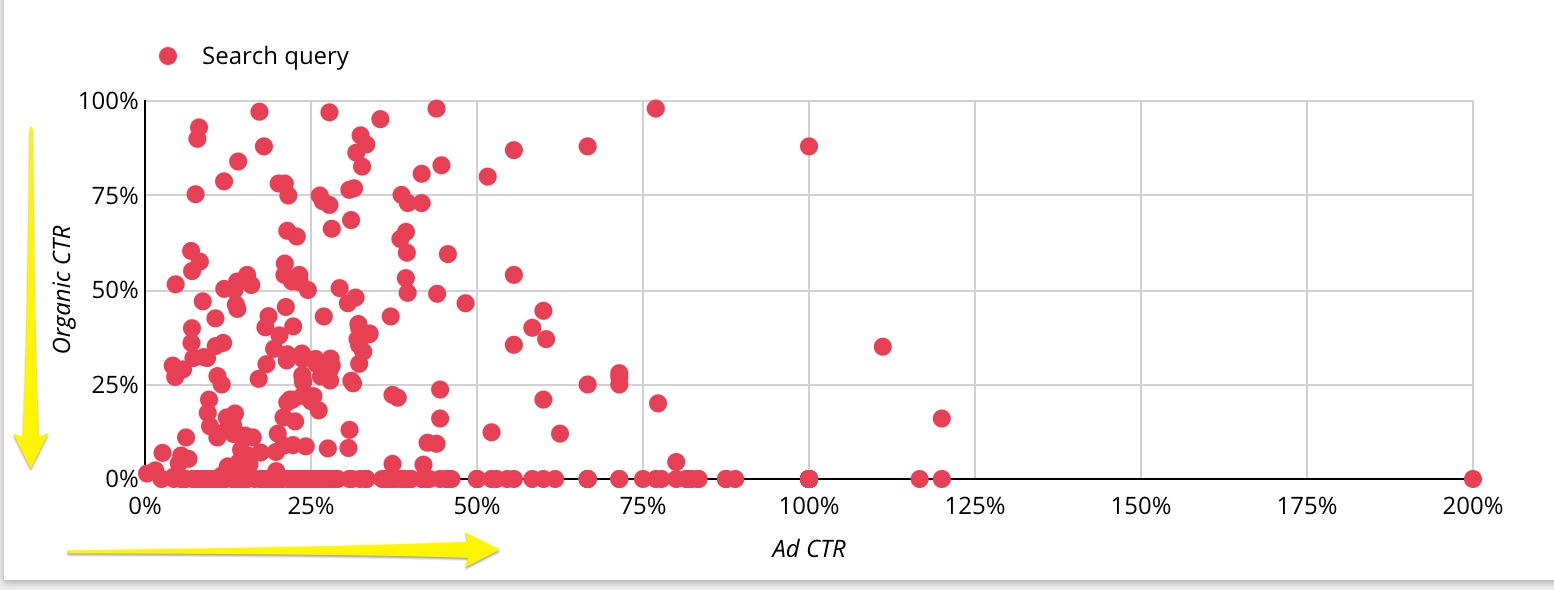 Identifying low organic CTR for keywords where PPC CTR is above average
Identifying low organic CTR for keywords where PPC CTR is above averageHere we’d look to know which keywords are generating a low organic CTR compared to an above average PPC CTR.
Essentially, we’re identifying high performing ad copy that can be used to inform our on-page SEO efforts.
For example, we can identify the ad copy related to the keywords with low organic CTR and high PPC CTR and then work this into key elements that make up the search engine listings such as page titles and meta descriptions.
Focusing on these relatively basic SEO elements for high volume search terms can drive significant traffic improvements, so focusing on this as a regular exercise really is a no-brainer.
Conclusion
These are just a few illustrations highlighting the power of a unified approach to search.
Integrating your data together and analyzing it with an eye on how each channel can complement each other will allow you to make smarter data-driven decisions around your search strategy.
This should in turn improve the results delivered through both channels.
It’s highly likely many of us will be asked to make cuts over the coming months due to economic circumstances.
There’s no better time to start arming yourself with this kind of data.
Prepare for the inevitable conversation on where savings can be made rather than pausing everything and putting yourself back to square one when everything starts picking back up again.
More Resources:
- SEO vs. PPC: A Few Forgotten Truths
- 7 Ways SEO & PPC Can Help Each Other
- How to Use the Synergy Between PPC & SEO to Leverage Campaigns
Image Credits
All screenshots taken by author, July 2020





